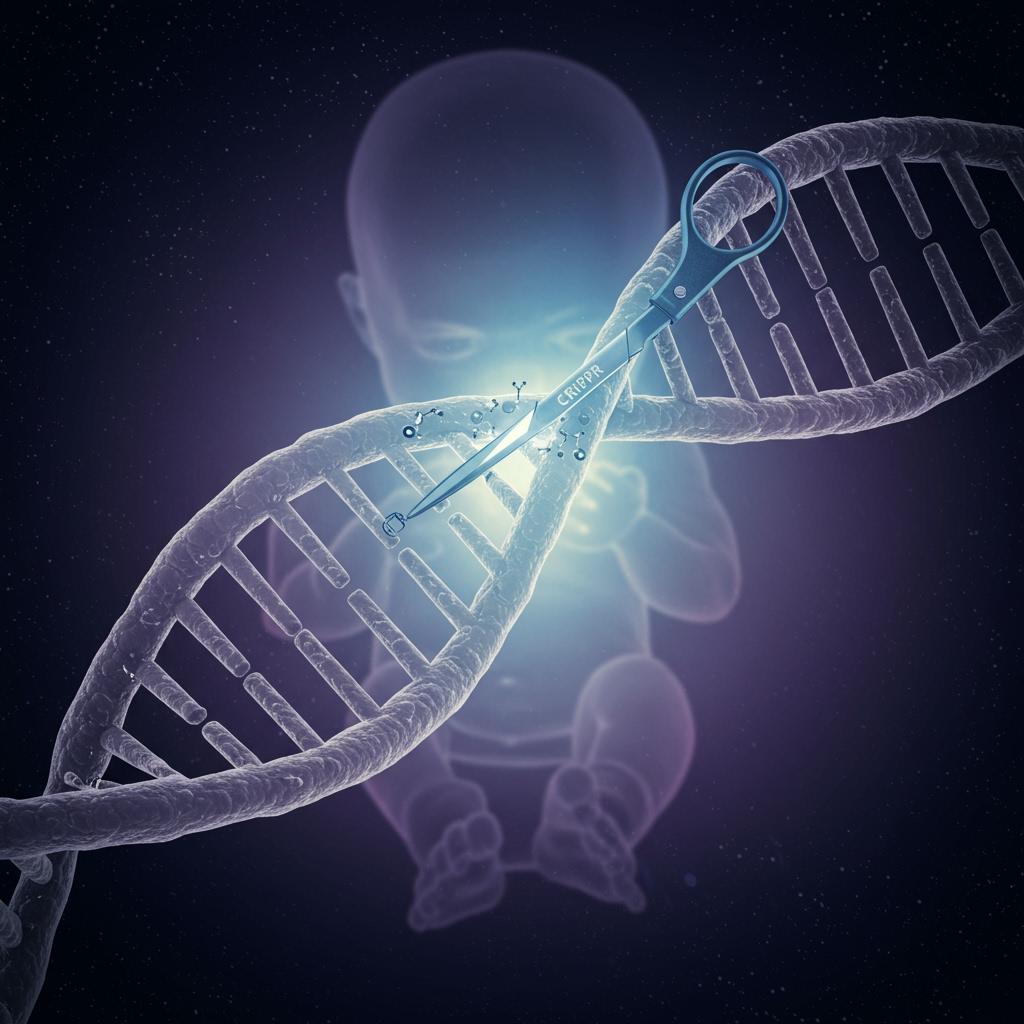CRISPR Babies: How Close Are We to Designing Humans?
 CRISPR gene editing holds the promise to change DNA with precision, raising hopes and questions about designing human traits.
CRISPR gene editing holds the promise to change DNA with precision, raising hopes and questions about designing human traits.
Unlocking the Blueprint of Life, One Gene at a Time
By Peter Teoh, Science Writer
Imagine a world where babies could be designed with the best traits: no genetic diseases, perfect eyesight, maybe even enhanced intelligence or athleticism. This idea, once the stuff of science fiction, is now edging closer to reality thanks to a powerful gene-editing tool called CRISPR. But how close are we really to designing humans? Let’s dive into the story of CRISPR babies and the science behind them.
What Is CRISPR, and Why Is It a Big Deal?
CRISPR (short for Clustered Regularly Interspaced Short Palindromic Repeats) is like a pair of molecular scissors guided by a GPS system that can find and cut specific parts of DNA inside living cells. DNA is the instruction manual for life, and CRISPR lets scientists precisely edit these instructions by cutting out mistakes or adding new pieces. This technology is faster, cheaper, and more accurate than older gene-editing methods.
Since its discovery, CRISPR has been used to develop treatments for genetic diseases—conditions caused by mistakes in our DNA.
The First CRISPR Baby Treatment: A Real-Life Milestone
In 2025, a historic breakthrough happened: a baby named KJ became the first patient to receive a personalized CRISPR gene-editing therapy. KJ was born with a rare and life-threatening liver disease caused by a single mutation in his DNA. Scientists designed a CRISPR-based treatment tailored just for him, which fixed the exact genetic error in his liver cells.
This therapy was developed and administered in just six months—a record speed for personalized medicine. Since the treatment, KJ has shown promising health improvements, like better protein digestion and fewer complications from common illnesses, without serious side effects so far[1][2][3][8].
Why Not Edit All Babies? The Challenges and Ethics
While KJ’s case is exciting, it’s important to understand why we aren’t designing babies on demand just yet.
-
Targeting Specific Cells: The CRISPR treatment for KJ was done on his liver cells only, which are non-reproductive. This means the changes won’t pass on to future generations. Editing embryos or reproductive cells is much more complicated and raises big ethical and safety concerns.
-
Complex Traits: Most human traits, like intelligence or height, are controlled by many genes interacting in complex ways. Editing a single gene can fix a disease, but designing complex traits is far beyond our current capabilities.
-
Safety Concerns: CRISPR can sometimes cut DNA in the wrong place (off-target effects), which might cause new problems. Researchers are working hard to improve precision and safety.
-
Ethical Questions: Editing human embryos raises questions about consent (the baby can’t agree!), fairness (who gets access?), and the possibility of “designer babies” widening social inequalities.
How Close Are We to Designing Humans?
Right now, CRISPR-based gene therapy is mainly used to treat genetic diseases in individuals, not to design traits in embryos. The first successes, like baby KJ’s treatment, are paving the way for more personalized medicine that can save lives.
Scientists are also exploring ways to use CRISPR to treat brain disorders and other complex conditions, but these are still in early experimental stages[7].
At the same time, powerful AI tools are being developed to help scientists design safer and smarter CRISPR therapies, adding speed and accuracy to the process while guarding against unethical uses[4].
What’s Next?
The future holds incredible possibilities:
- More personalized CRISPR treatments for rare diseases could become routine.
- Scientists might develop ways to safely edit genes in embryos—but only after careful ethical debates and strict regulations.
- Advanced AI could revolutionize how we discover new gene therapies and understand human biology.
But designing babies with chosen traits—like picking eye color or intelligence—is still science fiction for now, requiring much more knowledge, ethical discussion, and technology development.
Side Notes
-
What is a gene? A gene is a segment of DNA that carries instructions to make proteins, which build and maintain your body.
-
What’s an embryo? An embryo is the earliest stage of human development after fertilization, before a baby forms.
-
Off-target effects: When CRISPR accidentally edits DNA in the wrong place, potentially causing harm.
-
Germline vs. somatic editing: Germline edits affect eggs, sperm, or embryos and can be inherited. Somatic edits affect only the treated person.
Trending Sidebar
-
CRISPR cures rare diseases: New gene therapies, like the one for sickle cell disease, are being approved and used worldwide[2].
-
AI meets gene editing: AI systems like CRISPR-GPT help design gene therapies faster and safer[4].
-
Brain gene editing: Scientists are working on ways to safely edit genes in the brain to treat neurological disorders, with human trials possibly just years away[7].
-
Ethics debates heat up: Global conversations about the rules for human gene editing continue as technology advances rapidly.
Gene editing is one of the most exciting and complex frontiers of science today. While we’re not quite at the point of designing perfect babies, the progress in personalized gene therapies is already transforming lives and opening a new chapter in medicine. Stay curious — the future of genetics is unfolding right before our eyes!